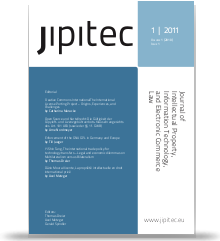Regulating Online Content through the Internet Architecture: The Case of ICANN’s new gTLDs
Keywords:
ICANN, International Chamber of Commerce, content regulation, freedom of expression, gTLDAbstract
The process introduced by the Internet Corporation for Assigned Names and Numbers (ICANN) to assess and allocate new generic top-level domains (gTLDs) offers a vehicle for content regulation at two levels. First, regarding the gTLD itself, objection procedures were set up to allow third parties to challenge an applied-for gTLD deemed to be contrary to “general principles of international law for morality and public order” or detrimental to broadly defined communities. The real target of these objections managed by the International Chamber of Commerce was not the gTLD itself, but the potentially controversial content that might be published under it. Second, these preventive measures were coupled with a strengthened anti-abuse policy for new gTLDs. ICANN amended its standard agreements with domain name registries and registrars to impose additional safeguards, compliance with “all applicable laws”, and remedies such as suspension of the domain name, which is a powerful tool to deny access to online content. Surprisingly these amendments were not discussed under ICANN’s consensus policy development process but added at the request of governments after the launch of the New gTLDs Program. These provisions, if actually enforced by ICANN, could lead to content policing by private entities without any measure to ensure due consideration of domain name holders’ freedom of expression.Published
2017-01-12
Issue
Section
Special Issue on Law and Governance in the Digital Era

